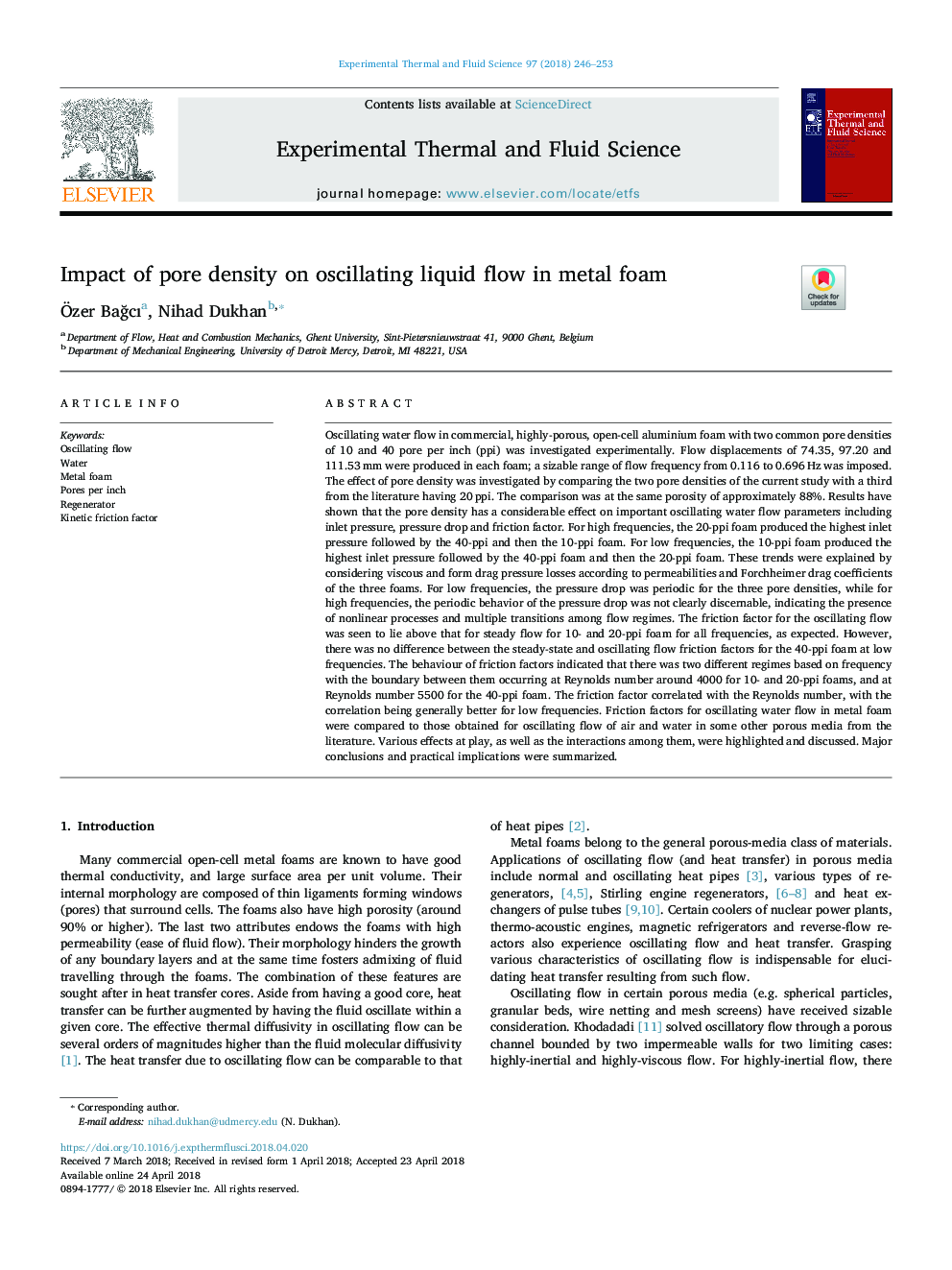| کد مقاله | کد نشریه | سال انتشار | مقاله انگلیسی | نسخه تمام متن |
|---|---|---|---|---|
| 7051616 | 1457379 | 2018 | 8 صفحه PDF | دانلود رایگان |
عنوان انگلیسی مقاله ISI
Impact of pore density on oscillating liquid flow in metal foam
ترجمه فارسی عنوان
تاثیر تراکم منافذ در جریان مایع نوسان در فوم فلزی
دانلود مقاله + سفارش ترجمه
دانلود مقاله ISI انگلیسی
رایگان برای ایرانیان
کلمات کلیدی
موضوعات مرتبط
مهندسی و علوم پایه
مهندسی شیمی
جریان سیال و فرایندهای انتقال
چکیده انگلیسی
Oscillating water flow in commercial, highly-porous, open-cell aluminium foam with two common pore densities of 10 and 40 pore per inch (ppi) was investigated experimentally. Flow displacements of 74.35, 97.20 and 111.53â¯mm were produced in each foam; a sizable range of flow frequency from 0.116 to 0.696â¯Hz was imposed. The effect of pore density was investigated by comparing the two pore densities of the current study with a third from the literature having 20â¯ppi. The comparison was at the same porosity of approximately 88%. Results have shown that the pore density has a considerable effect on important oscillating water flow parameters including inlet pressure, pressure drop and friction factor. For high frequencies, the 20-ppi foam produced the highest inlet pressure followed by the 40-ppi and then the 10-ppi foam. For low frequencies, the 10-ppi foam produced the highest inlet pressure followed by the 40-ppi foam and then the 20-ppi foam. These trends were explained by considering viscous and form drag pressure losses according to permeabilities and Forchheimer drag coefficients of the three foams. For low frequencies, the pressure drop was periodic for the three pore densities, while for high frequencies, the periodic behavior of the pressure drop was not clearly discernable, indicating the presence of nonlinear processes and multiple transitions among flow regimes. The friction factor for the oscillating flow was seen to lie above that for steady flow for 10- and 20-ppi foam for all frequencies, as expected. However, there was no difference between the steady-state and oscillating flow friction factors for the 40-ppi foam at low frequencies. The behaviour of friction factors indicated that there was two different regimes based on frequency with the boundary between them occurring at Reynolds number around 4000 for 10- and 20-ppi foams, and at Reynolds number 5500 for the 40-ppi foam. The friction factor correlated with the Reynolds number, with the correlation being generally better for low frequencies. Friction factors for oscillating water flow in metal foam were compared to those obtained for oscillating flow of air and water in some other porous media from the literature. Various effects at play, as well as the interactions among them, were highlighted and discussed. Major conclusions and practical implications were summarized.
ناشر
Database: Elsevier - ScienceDirect (ساینس دایرکت)
Journal: Experimental Thermal and Fluid Science - Volume 97, October 2018, Pages 246-253
Journal: Experimental Thermal and Fluid Science - Volume 97, October 2018, Pages 246-253
نویسندگان
Ãzer BaÄcı, Nihad Dukhan,
